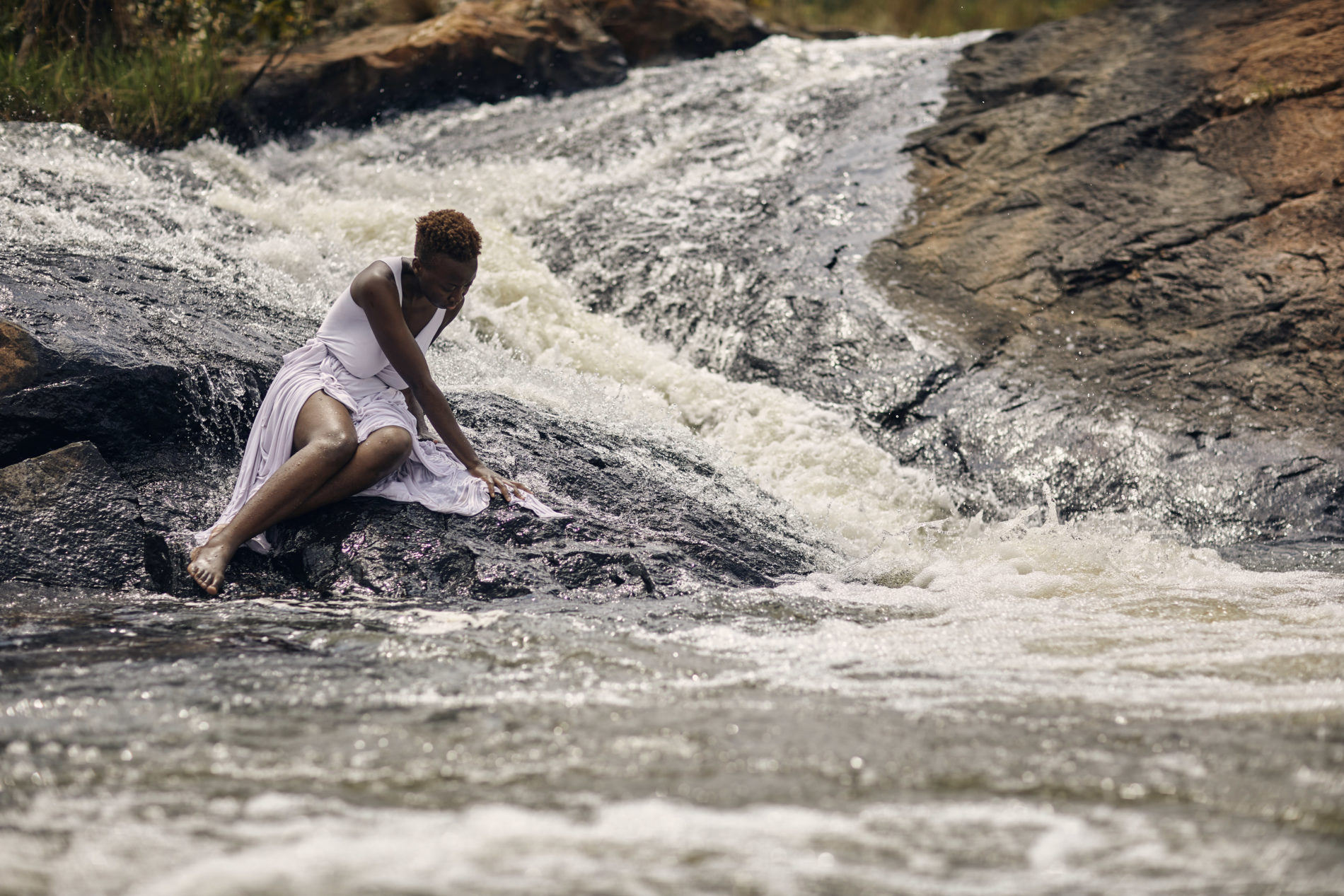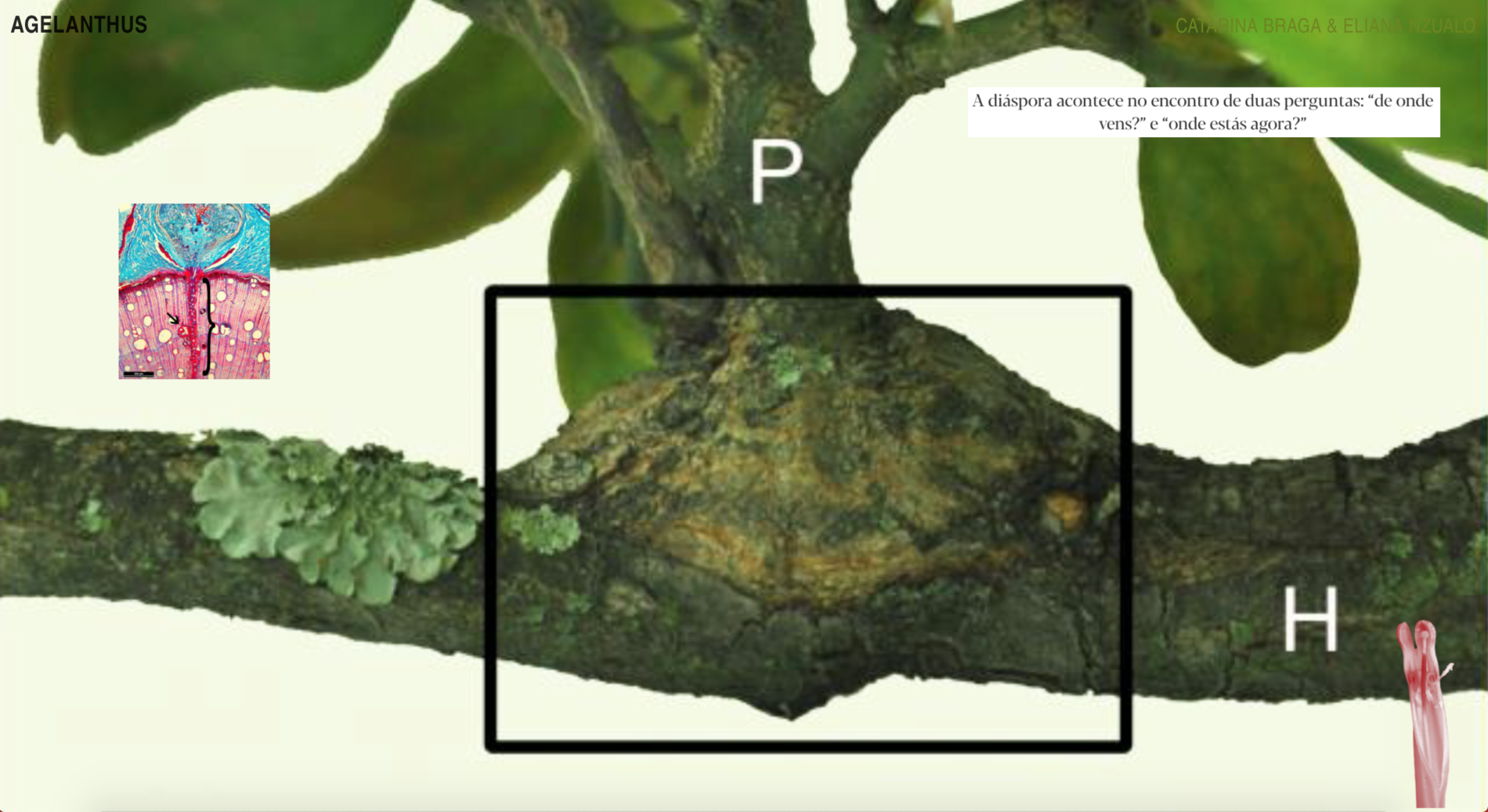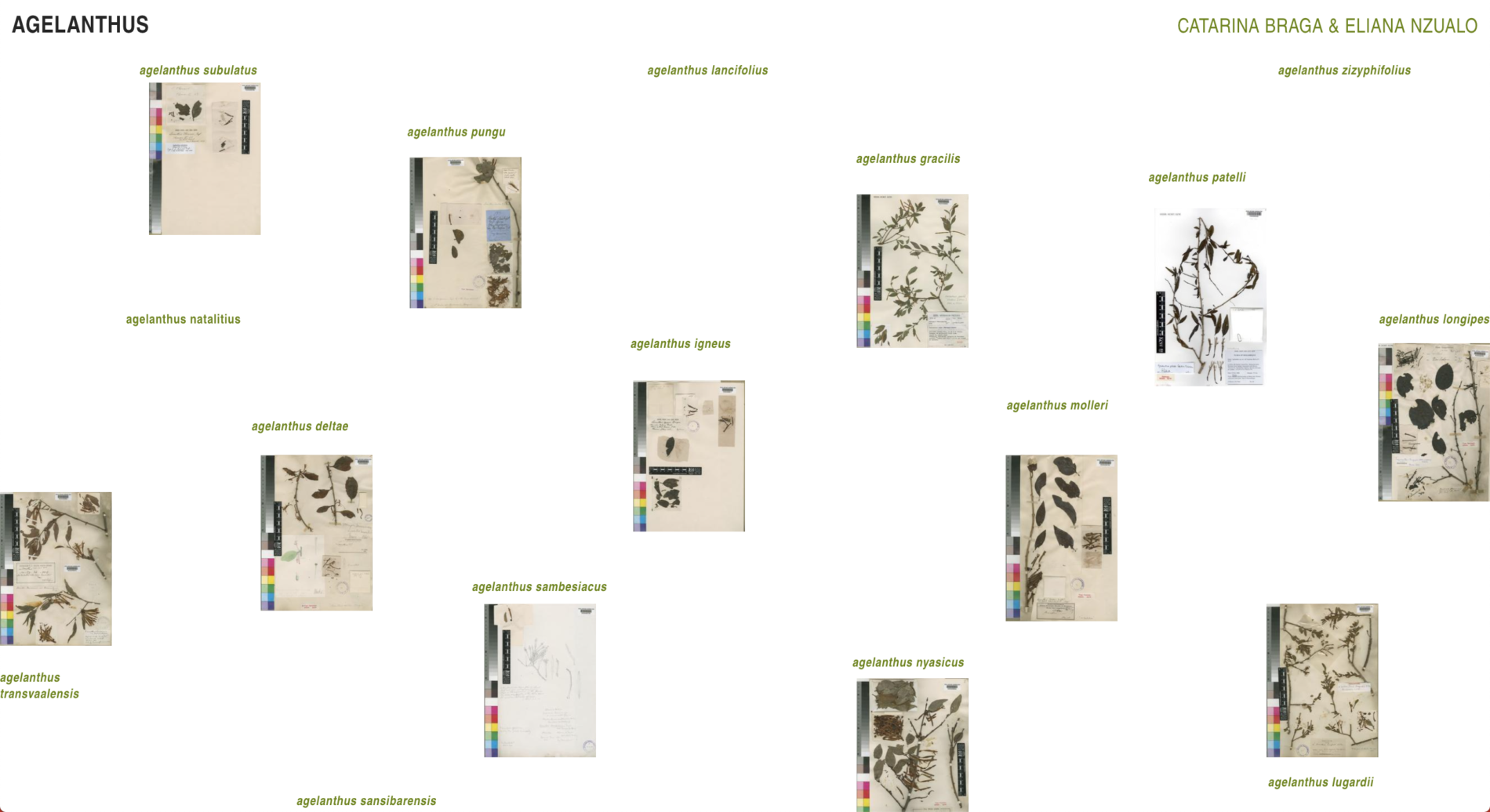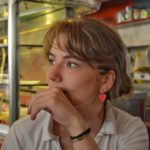MAGAZINE
[ENGLISH VERSION BELLOW]
Eliana Nzualo é uma contadora de histórias moçambicana baseada em Maputo.
No seu trabalho explora temas como Feminismo, África, História e Política.
Ela também é feminista e uma amante de gatos profundamente apaixonada por palavras: como as palavras se estendem e se quebram, às vezes nos traem, às vezes fogem de nós, como as palavras são uma parte tão grande de nós – como gatos.
Eliana foi selecionada para a primeira edição do projeto Cross-Cultural Collaboration como artista Moçambicana, em conjunto com Catarina Braga, artista Portuguesa. Neste artigo exploramos um pouco como o seu interesse por arte começou e se desenvolveu, entrado em detalhe no processo da colaboração artistica – Agelanthus. As mesmas perguntas foram colocadas a ambas as artistas, resultando num interessante contraste de opiniões e visões acerca do mesmo produto artistico, da colaboração e do projeto CCC. (vê a entrevista da Catarina aqui: https://wendy.network/interview-catarina-braga-cross-cultural-collaboration-pt-and-eng-version/)
Quando começou o teu interesse por arte? Qual foi a tua motivação para te tornares artista?
Não sei quando começou o meu interesse. Desde pequena que me expressei de forma artística. Acho que todos nós nascemos artistas. As crianças cantam, desenham, dançam com muita naturalidade, em todas as culturas, então acho que nesse sentido não sou uma excepção. Não me sinto especial ou única, penso que é uma característica humana. Não tinha qualquer motivação na altura, apenas criar. E acho isso muito bonito.. Acho que precisamos de resgatar essa coisa infantil da criação, do processo como o propósito em si.
De onde vem a tua necessidade de criar arte? E como descreverias a tua arte?
A minha necessidade de criar arte vem do mesmo lugar da necessidade de dormir ou comer, é uma questão de sobrevivência. A minha arte é muito auto-biográfica, uso-me das minhas criações para mergulhar nas minhas questões, nos meus dilemas, na minha história.
Onde vais buscar inspiração normalmente?
A minha inspiração vem precisamente de mim. Eu sou a minha própria musa.
O que te atraiu nesta residência?
Sinceramente não sei. Lembro-me que a minha primeira reacção quando vi a chamada não foi das melhores, porque senti que havia uma certa apologia ao Colonialismo e um discurso que roçava o luso-tropicalismo, ali com a coisa da Língua Portuguesa. E depois duas pessoas partilharam comigo, e eu deixei o tab aberto de tal forma que fui vendo a website ali durante vários dias, até que um dia escrevi a minha candidatura e assim foi. Na altura eu já estava numa outra residência e sentia que ainda podia explorar o meu tema muito mais então foi essa a minha proposta.
Qual é a importância de colaborações internacionais na Arte, e de uma colaboração como o CCC?
Penso que num mundo em que estamos constantemente a falar e a produzir, é importante termos espaços de escuta. As colaborações permitem-nos fazer isso, e nesse sentido, por que não usar a arte como veículo para esses diálogos? A arte permite-nos fazer uso até do silêncio que vem dessa escuta.
Como é o cenário criativo em Moçambique? Quais pensas serem as maiores diferenças entre o teu cenário criativo e o da Catarina?
Seria difícil falar do cenário criativo em Moçambique, não só porque é um país muito grande e eu moro em Maputo, mas também porque a minha prática, a escrita, é essencialmente uma prática solitária e por isso interajo relativamente pouco com outros artistas (profissionalmente, isto é). Mas falando especificamente de mim, eu parto de um ponto de anti-colonialidade e de procura de outros cânones enquanto a Catarina vem de um espaço académico, que é um espaço colonial por excelência e de manutenção de uma certa ordem. Então nesse sentido temos formas de olhar o trabalho muito distintas, o que é óptimo.
Quais foram as maiores dificuldades enfrentadas nesta colaboração? Como é que o teu trabalho individual cresceu com a colaboração com a outra artista?
As maiores dificuldades para mim foram o tempo, pois um mês exige um ritmo de trabalho que não é o que eu costumo utilizar, e também o método. Eu como escritora, trabalho essencialmente sozinha e tenho um método. A Catarina também tem o seu método, e juntas em muito pouco tempo tínhamos de encontrar um método que funcionasse para as duas. Acho que isso ainda está em construção. Uma residência online também não nos permite retirar o nosso corpo/mente/ espírito dos nossos locais habituais e portanto, ficamos muitos expostas a distracções, interferências, que acabam viciando a própria residência.
A partilha da língua materna facilitou a colaboração?
Não sei se considero a Língua Portuguesa como minha língua materna. Língua madrasta, talvez. Acho que a língua pode ter facilitado tanto quanto os computadores ou a internet, ou seja, como uma ferramenta, um instrumento. Eu provavelmente daria mais crédito aos nossos trabalhos, o facto de ambas termos experiência de emigração, a nossa abertura para o processo ou o papel dos mentores.
Como se desenvolveu este processo colaborativo? Foi sempre claro qual seria o produto final?
Até agora não está claro qual será o produto final e como eu disse no início, acho importante mantermos também o gosto pela criação, pelo processo. Em 4 semanas, para duas pessoas que não se conhecem nem conhecem os seus trabalhos, acho que conseguimos levantar algumas provocações interessantes.
Porquê a agelanthus?
A Catarina nas suas pesquisas encontrou Agelanthus e apaixonou-se. Pelas nossas conversas e pelos nossos temas, pareceu-nos um bom ponto de partida e quanto mais fomos pesquisando, mais fez sentido. Agelanthus é uma metáfora para pensarmos as nossas raízes, processos de ocupação e de nomeação, para sairmos também do campo do corpo humano para o corpo planta e para o que esse corpo planta representa.
Consideras que se a Catarina visse a angelanthus ao vivo, quebraria o feitiço do projeto?
Acho que não. Mais do que a planta em si, Agelanthus é um conceito. As plantas não têm nomes, esse nome foi um ser humano que deu. Foi o ser humano que descreveu e catalogou (ou tentou catalogar) as plantas. E nós estamos também a inscrever mais sentidos a esse corpo planta, portanto nem sequer estamos a falar dela em si, estamos a falar de nós.
Há planos para o futuro deste projeto?
Temos toda a intenção de continuar, até porque só ainda tocámos a superfície. Pretendemos pesquisar mais e materializar qualquer coisa. Ainda não sabemos bem como, mas isso vai acontecer de certeza.
[ENGLISH VERSION]
Eliana N’Zualo is a Mozambican storyteller based in Maputo. In her work, she explores themes such as Feminism, Africa, History and Politics. She is also a feminist and a cat lover deeply in love with words: how words stretch and break, sometimes betray us, sometimes flee from us, how words are such a big part of us – kind of like cats.
Eliana was selected for the first edition of the Cross-Cultural Collaboration as a Mozambican artist, together with Catarina Braga, a Portuguese artist. This article explores how her interest in art started and developed itself, going in-depth into the project and artistic collaboration – Agelanthus. We asked the same questions to both artists, resulting in an interesting contrast of opinions and visions regarding the artwork, the collaboration and the CCC project. (See Catarina’s interview here: https://wendy.network/interview-catarina-braga-cross-cultural-collaboration-pt-and-eng-version/)
Where did your interest in art come from? What was your motivation to become an artist?
I don’t know when my interest in it started. I have expressed myself artistically ever since I was little. I think we are all born artists. Children sing, draw, dance naturally, in every culture, and I was no exception in that regard. I don’t feel special or unique, it is simply a human characteristic. And I find that beautiful… I believe we need to rescue that childish thing of creation, of the process as the purpose.
Where does your necessity to create art come from? And how would you describe your art?
My necessity to create art comes from the same place as my necessity to eat or sleep, it is a matter of survival. My art is very autobiographic, I make use of my creations to dive deep into my questions, my dilemmas, my history.
Where does your inspiration usually come from?
My inspiration comes precisely from me. I am my own muse.
What attracted you to this residency?
Honestly, I don’t know. I remember my first reaction to the Open Call was not the best, I felt like there was a colonialism perpetuation and a sort of Luso-Tropical discourse (with the Portuguese language). And then two different people shared the call with me, and I left the tab open and looked at the website nearly every day, until one day I wrote my application. Back then I was already in another residency and felt like I could explore my topic way more, so I use it as my proposal.
What is the importance of international art collaborations, and collaborations such as the CCC?
In a world where we are constantly talking and producing, I feel like it’s important to have places for listening. Collaborations allow us to do so, and in that sense, why not use art as a means for those dialogues? Arte allows us to make use of even the silence that comes from listening.
How is the creative scenario in Mozambique like? What do you think are the biggest differences between your creative scenario and the one of Catarina?
It would be hard to speak about the creative scenario of Mozambique, not only because it is a very large country and I live in Maputo, but also because my practice, writing, is essentially lonely and therefore I have little interactions with other artists (professionally at least). But speaking specifically about me, I come from an anti-colonial starting point and a search for other canons, while Catarina comes from an academic environment, a colonial space by excellence and of order maintenance. We have very different ways of looking at our work, which is great.
What were the biggest difficulties in this collaboration? How did your individual work grow by collaborating with another artist?
My biggest difficulties were mainly time – only one month requires a working rhythm that is not the one I am used to; and also method. As a writer, I work alone with my own method. Catarina also has her method, and together, with little time, we had to find a way to make it work for both of us. I believe that it is still being constructed. An online residency also does not allow us to remove our body/mind/spirit from our usual working environments and we are, therefore, exposed to distractions and interferings.
Did the usage of the same mother tongue facilitate the collaboration?
I don’t know if I consider Portuguese as my mother tongue. Stepmother tongue perhaps. The language might have facilitated it as much as the computers or the internet, as a tool, as an instrument. I would give more credit to our work, the fact we both have emigration experience, our openness for the process or the role of our mentors.
How did the collaborative process develop? Was the finished product always clear?
So far it is still not clear what the final product will be, and as I mentioned in the beginning, I think it’s important that the appreciation for the creation and the process remains. In four weeks, for two people that did not know each other and each other’s work, I believe we were able to raise some interesting provocations.
Why agelanthus?
During her research, Catarina found agelanthus and fell in love with it. Alongside our conversations and topics, it felt like a good starting point, and as we researched deeper, the more it made sense. Agelanthus is a metaphor for thinking about our roots, occupation and appointment processes, to exit the human body field and enter the plant body and all it represents.
Do you think if Catarina saw agelanthus in real life, it would ‘break the spell’ of the project?
I don’t think so. More than a plant, agelanthus is a concept. Plants don’t have names, they are given a name by a human. A human being described and categorized the plant (or at least tried to). And we are also coming up with more meaning for that plant-body – we end up not even talking about the plant itself, but about ourselves.
Are there any plans for the future of this project?
We have all intentions to continue, especially because we have only touched the surface of it. We intend to research more and materialize it into something. We are not sure how, but it will definitely happen.



